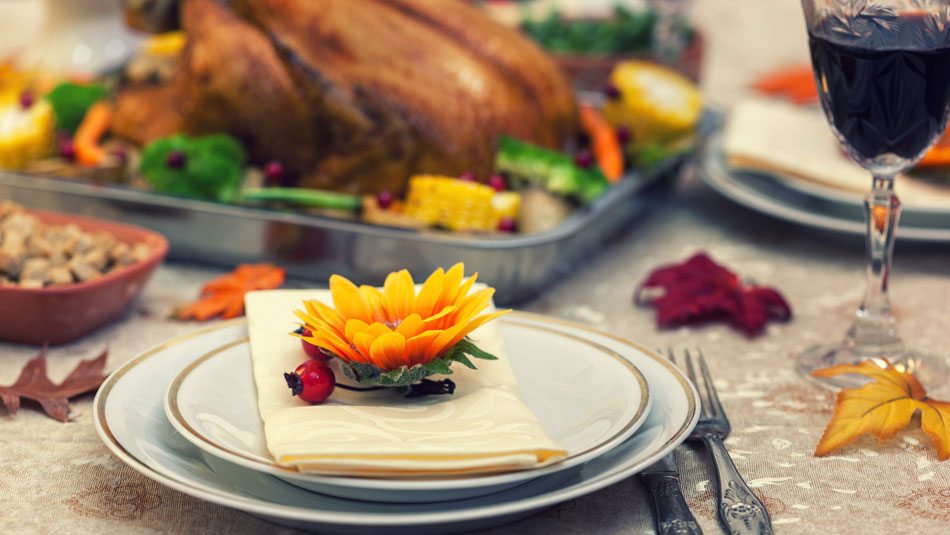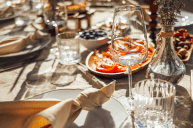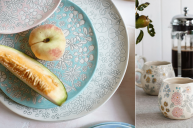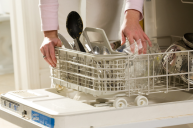When hosting Thanksgiving, there's a whole lot more than just the meal to worry about. You have to worry about welcoming some hangry guests into your home and occupying them until that turkey comes out of the oven. If the last thing you want to worry about is how to deal with the table settings, let us help you out.
Videos by Wide Open Country
When it comes to setting the table and arranging your guests, use this handy guide to help ease the burden.
Basic Table Setting
If you're having something simple and no-fuss, start with a basic table setting.
Place the dinner plate in the center of the placemat, and arrange the flatware around it in the order it's used.
Place the fork to the left of the plate.
To the right of the plate, place the knife (edge toward the plate) then the spoon on the outside right. A water glass goes above the knife.
Napkins may be placed under the fork on the plate.
Informal Table Setting
https://www.instagram.com/p/BqIF_L2jU-c/
For an informal (or "luncheon") setting, start off with the basic setting above and add pieces as you need, depending on what you'll be serving.
If you're serving a salad, place the salad fork to the left of the dinner fork (on the outside). If no salad is being served, the fork may be eliminated or used as a dessert fork, placed to the right of the dinner fork (between the dinner fork and the plate).
If soup is on the menu, set the bowl on a plate and place a soup spoon to the right of the beverage spoon.
Salad or bread and butter plates go to the left of the forks, slightly above.
A cup and saucer for coffee or hot tea will be placed above the spoons, handle to the right. Wine and water glasses are placed to the left of the coffee cup.
Formal Table Setting
For a formal Thanksgiving dinner, the rules are firm and as follow.
Place the service/charger plate in the center of the place mat, about three inches from the edge of the table.
Place the dinner plate on top of the service plate. Place the salad plate on top of the dinner plate.
To the far left of the service plate goes the napkin, folded neatly. If you're using napkin rings, you may place it on top of the salad plate instead.
To the right of the napkin (between the napkin and the plates), place the salad fork, then the dinner fork, moving toward the center.
To the far right of the charger, place the soup spoon. Moving inward toward the center plates, place the teaspoon, then then the knife.
At the top left corner, slightly above the service plate, place the bread and butter plate, with a butter knife laid diagonally across the face of the plate, handle down.
Centered above the charger goes the dessert fork and, just above that, dessert spoon, faced in opposite directions. Place cards, if you're using them, go above the spoon.
White wine/water glass goes to the upper right of the service plate. The red wine glass goes on the outside of that. If you're serving both - what a great host! - the water glass goes just above the white wine glass.
After clearing salad and dinner plates, the dessert plate takes their space atop the service plate.
Coffee cup and saucer (optional) are always placed last, to the bottom right of the dessert plate.
Seating Chart
Now that you've settled on your settings, it's time to think about seating. This can be tricky. Luckily, much has been written on the subject. Good Housekeeping offers up this helpful piece which I'll try to sum up - give the original a look, though, for the finer points.
Make sure you have enough tables and chairs for everyone, and decide if you'll be seating all guests at one table, or dividing them. Will there be a kids table? If so, are the kids close enough in age, or are you stranding a single teenager with his much-younger cousins, nieces and nephews? If the kids are young, are they too young to be left unsupervised?
If you are splitting tables, Good Housekeeping says one host should be seated at each table, to make sure plates and glasses don't ever stay empty.
Traditionally, if all guests are seated at one table, the hosts are seated together at the end (or head) of the table. Honored guests - mom and dad and the in-laws especially - are seated to the hosts' right, then left. However, here's a situation where today, "convenience trumps tradition" and hosts often need easy in/out access to continue hosting.
Couples are the next thing to consider. Should they sit together, or apart to encourage mingling? That said, couples shouldn't ever be placed too far apart, and if there's kiddos involved, they should always be next to mom and dad. Booster seats are a must if any young couples are coming. If you're eating at a round table, you can seat couples together; at a rectangular table, they can be seated across from one another.
All tradition and convention aside, your goal is to make everyone as happy and comfortable as possible. Pair shy folks or newcomers with the more outgoing and amicable guests around the table. Lefties are best seated at corners so they aren't forced to bump elbows all evening. A little extra space is nice for us, too.
Perhaps most importantly, you want everyone to get along, so consider in advance any disagreements between guests at your table. After the most recent political cycle, though, this could be tricky. Best of luck.




